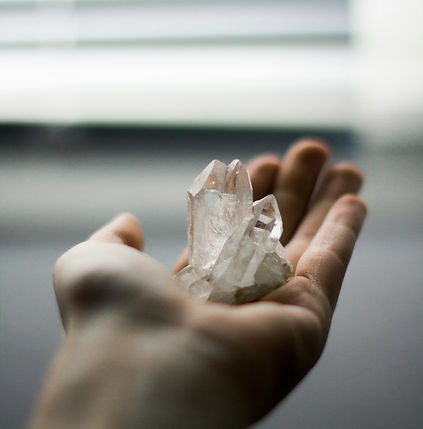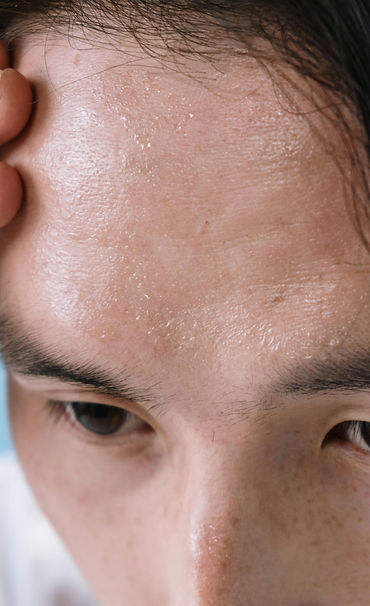Hyperhidrosis Affects
3% of The Population
Hyperhidrosis refers to excessive sweating and most commonly affects the Underarms, Hands and Face.
Effective Treatments Are Available.

What Is Hyperhidrosis?
Hyperhidrosis is a medical condition characterized by excessive sweating, which can affect various regions of the body. When sweating is localized to a specific area, it is referred to as Focal hyperhidrosis. Conversely, if the excessive sweating occurs throughout the entire body, it is classified as Generalized hyperhidrosis. Focal hyperhidrosis is typically not linked to specific disease processes, while Generalized hyperhidrosis necessitates comprehensive investigation and treatment.
Focal Hyperhidrosis, also known as essential or primary hyperhidrosis, generally lacks an identifiable cause (termed idiopathic) and can be further categorised based on the specific areas affected:
- Axillary Hyperhidrosis involves excessive sweating in the armpits, with more than 50% of patients experiencing this condition.
- Palmar Hyperhidrosis is characterised by excessive sweating in the hands, affecting up to 25% individuals.
- Cranio-facial Hyperhidrosis pertains to sweating on the face, particularly the scalp and forehead, accounting for 10-20% of patients at our clinic.
- Plantar Hyperhidrosis refers to excessive sweating in the feet, which presents unique treatment challenges due to the large area involved, often limiting the efficacy of injection therapies.
It is not uncommon for patients to exhibit excessive sweating in multiple areas concurrently, such as the underarms and hands, underscoring the multifaceted nature of this condition.

Pathophysiology or causes of Hyperhidrosis
Hyperhidrosis is typically viewed as a hereditary condition that leads the sympathetic nervous system to respond more strongly to environmental stimuli than usual. Consequently, even minor feelings of threat or anxiety can trigger an overreaction in the brain region responsible for sweating. This overactivity prompts the sympathetic nervous system to signal the sweat glands to produce more sweat. Additionally, other areas of the brain, such as the hypothalamus and certain regions of the cerebral cortex, may also play a role hyperhidrosis.

Hyperhidrosis Diagnosis and Symptoms
The diagnosis of hyperhidrosis varies for each individual, making it a challenging condition to assess. Each patient experiences excessive sweating differently; some may only mild sweating yet feel significantly bothered by it. Many are unaware that effective treatments exist for hyperhidrosis.
To aid in the diagnosis, a standardised tool known as the Hyperhidrosis Severity Scale can be utilized.
Here are some questions a doctor may ask to help determine if you have hyperhidrosis:
- When did your sweating start?
- Which areas are most affected? Does it impact just one or two spots or your entire body?
- What treatments have you previously tried, including topical solutions or medications from other doctors? How effective were they?
- Does anyone in your family also experience excessive sweating?
- Where do you sweat the most? What specific conditions or stresses trigger it?
- How does your sweating affect your daily life?
- Are there any particular triggers for your sweating?
- Do you experience depression anxiety?
- Do you avoid shaking hands?
- Do you find it difficult to form relationships, or do you steer clear of social events due to your sweating?
- Do you frequently need to change your clothes?

Statistics and Risk Factors
Hyperhidrosis is an inherited genetic condition that tends to occur more frequently among family members, with estimates suggesting a 20 to 30% chance of another relative also experiencing it. This condition can manifest at any age, but many individuals recall excessive sweating starting from primary school to early high school, particularly in their hands and underarms. In contrast, facial sweating typically appears later in life, often after the age of 25.
Hyperhidrosis is fairly common, affecting around 3-5% of the population in Western countries, with estimates indicating that up to 15% of adolescents experience it, although it often resolves on its own without affecting them later in life. In our observations, most patients are between 18 and 35 years old, and we generally find that the impact and prevalence of hyperhidrosis tend to decrease after the age of 50.

Clinical Examination
During your consultation process a medical examination is necessary to be carried out. This usually is a simple process of examining the areas where you sweat most. In cases of generalised hyperhidrosis a more thorough examination is necessary to exclude secondary causes. It may also require blood tests to be performed to rule out causes such as thyroid and other endocrine diseases.
The most common way to identify areas of excessive sweating is by performing the Minors Iodine Starch test. This is a very simple procedure of using iodine commonly in the form of betadeine being applied to the area where you sweat followed by using cornstarch. The cornstarch will turn a dark brown black colour when it is mixed with your perspiration.
There are other tests which can also be done to assess excessive sweating. These include
-
Gravimetric Testing which involves the use of assessing how much sweat is absorbed by a piece of paper.
-
Thermoregulatory Sweating Test and the Quantitative Sudomotor Axon Reflex Test.
-
All of the above testing methods are generally not practical in clinical practice to assess whether or not someone has hyperhidrosis.

Hyperhidrosis Treatment Options
The treatment of hyperhidrosis is determined by the area you are trying to stop sweating. Treatment is always commenced with the least invasive and mildest treatment that controls sweating. In the majority of cases this will involve the use of topical antipersiprant such as those that are commercially available from the supermarket or more concentrated formulations such as aluminium chloride which is available from the chemist. When this fails, the doctor usually prescribes either a trial of oral medication or recommends the use neurotoxin injections. The table below is a useful guide i giving you some treatment options.
Topical Agents and Antipersirants
Antiperspirants are ideal for managing mild sweating and can be applied to the underarms, hands, face, feet. However, stronger antiperspirants may lead to skin irritation for some individuals. The most potent options, like Dri Chlor, contain aluminium chloride and should be considered before consulting a healthcare professional. If you have concerns, it's advisable to speak with your doctor.
Unlike deodorants, which merely mask odors, antiperspirants actively reduce sweat production through the use of aluminium chloride. A notable drawback of products such as Dri Chlor is their tendency to irritate the skin in a significant number of users.
Oral Medications
Several oral medications are for managing hyperhidrosis, including Ditropan and Probanthine. These drugs function by limiting the electrical signals sent to the sweat glands. For maximum effectiveness, they need to be taken regularly, up to four times a day, and in higher doses.
While these medications can stimulate the parasympathetic nervous system, they may also cause significant side effects like dry mouth, blurred vision, and constipation. However, many individuals find these medications effective, and they are generally considered safe and more affordable compared to other treatment options.
Ultimately, the decision to use oral medications depends on an individual's tolerance for side effects.
Injection Treatments With Neurotoxin Muscle Relaxants
Injection therapy using neurotoxin muscle relaxants is a well-established treatment for hyperhidrosis. The first published account of its application appeared in 1998 by Austrian neurologist Dr. Naumann. When injected beneath the skin, neurotoxins work by blocking the neurotransmitters necessary for transmitting signals from nerves to sweat glands. The effects of these injections begin within four days and typically last at least six months, extending to 9-12 months for the face and underarms, while hand effects last between six and seven months. Unfortunately, the effectiveness on the feet is shorter, lasting only 3 to 4 months.
The injection procedure is straightforward, quick, and relatively painless due to the use of anesthesia or light sedation, particularly when treating the hands.
With many years of experience utilizing this treatment, we find the effectiveness of these injections can be maintained over time. Although some doctors suggest a theoretical risk of developing auto-antibodies that may reduce effectiveness, clinical experience indicates this is quite rare.
The only contraindications for this treatment are a confirmed allergy history, neuromuscular diseases, or if you are pregnant or breastfeeding.



Iontophoresis
Iontophoresis involves the delivery of electrons to the targeted area to reduce sweating This process interrupts the flow of essential ions that facilitate nerve impulses to the sweat glands.
The procedure requires an electrical device, which can cost up to $1000, with the best options often available outside of Australia.
Iontophoresis typically needs to be conducted daily for 45-60 minutes, making it a less appealing treatment option. It is mainly effective for excessive sweating in the hands and feet.
In addition to being time-consuming, iontophoresis may cause skin and is not suitable for pregnant individuals or those with pacemakers.
Endoscopic Thoracic Sympathetomy


